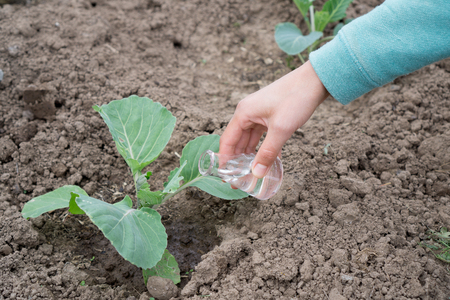Understanding the Importance of Water Conservation in Permaculture
Water conservation isn’t just a good idea for American gardeners—it’s becoming an essential practice as droughts and unpredictable weather patterns intensify across the country. Permaculture, rooted in working with nature instead of against it, offers practical solutions for stewarding water resources wisely. The core principles of permaculture—such as observing natural patterns, catching and storing energy, and valuing renewable resources—directly align with responsible water management. By recognizing that every drop counts, especially in regions hit hard by drought like California or the Southwest, gardeners can design resilient landscapes that thrive even when rainfall is scarce. Incorporating water-smart strategies not only sustains gardens through dry spells but also builds healthy soil, supports local ecosystems, and reduces dependence on municipal supplies. Understanding this connection between permaculture ethics and water stewardship is the first step toward creating gardens that are both productive and drought-resilient, no matter where you live in America.
Assessing Your Site and Local Climate
Before you can implement effective water conservation strategies in your permaculture garden, it’s essential to thoroughly assess your specific site and understand your local climate. Smart water planning starts with knowing the conditions unique to your space—whether you’re gardening in a suburban California backyard, a Midwest homestead, or an arid Southwest plot. Begin by observing how water moves through your landscape during rainfall or irrigation. Notice where water pools, runs off, or soaks in fastest. Consider sun exposure, prevailing winds, slope, soil texture, and existing vegetation, as these factors all influence how much water your garden will need and retain.
Understanding Regional Climate Zones
The U.S. encompasses diverse climate zones that directly impact water availability and drought risk. Identifying your USDA Hardiness Zone is a good start, but also pay attention to average annual rainfall, seasonal temperature swings, and evaporation rates. This helps you choose plants suited for your area and design systems that maximize natural rainfall capture.
Key Climate Factors to Consider:
| Factor | Impact on Water Use | Assessment Tips |
|---|---|---|
| Rainfall Patterns | Determines natural water input and timing of supplemental irrigation | Track monthly averages; note peak rainy/dry seasons |
| Temperature Extremes | Influences evaporation rates and plant transpiration needs | Record summer highs/winter lows; watch for heatwaves or frosts |
| Soil Type | Affects drainage speed and water-holding capacity | Test soil for sand/clay/silt ratio; observe infiltration after rain |
| Wind Exposure | Increases evaporation and can stress plants | Note direction/intensity of prevailing winds; check for windbreaks |
| Slope/Elevation | Impacts runoff speed and areas prone to erosion or pooling | Create a simple topographic sketch; watch flow during storms |
Practical Steps for Site Assessment:
- Walk your garden after a rainstorm. Identify high and low spots, noting where water sits or flows away quickly.
- DIG A FEW TEST HOLES. Check how deep moisture goes and how fast it drains—this reveals root zone hydration potential.
- TALK TO NEIGHBORS OR LOCAL EXTENSION OFFICES. They often know microclimate quirks (like frost pockets or drought-prone stretches) that may not show up in official data.
- RECORD YOUR OBSERVATIONS THROUGHOUT THE SEASONS. Keep a simple logbook or spreadsheet—patterns will emerge that help refine your water management plan year after year.
This careful assessment forms the backbone of any drought-resilient permaculture system—helping you tailor everything from plant selection to irrigation techniques for true sustainability.
![]()
3. Soil Health: The Foundation of Water Retention
Building healthy soil is at the heart of any water-wise permaculture garden, especially in the diverse climates found across the United States. The secret to drought-resilience starts underground, where rich, living soils can hold onto moisture far more effectively than tired, compacted ground. Composting is one of the most practical ways to boost your soil’s organic matter. By adding well-rotted compost, you introduce beneficial microbes and improve the soil structure, making it spongier and more capable of soaking up rainfall or irrigation. Whether you’re in dry California or humid Florida, regular compost applications give plants a buffer against both drought and downpours.
Mulching: A Simple Barrier Against Evaporation
Layering mulch—such as straw, wood chips, or shredded leaves—over your beds shields the soil from the blazing sun and reduces evaporation. Mulch also keeps roots cooler and provides habitat for earthworms and other helpful critters. In regions prone to summer heatwaves or sudden cold snaps, mulching helps stabilize temperatures right at the root zone. Aim for a 2-4 inch layer around your plants and replenish it as needed throughout the growing season.
Cover Cropping: Living Roots for Lasting Moisture
Planting cover crops like clover, rye, or vetch during off-seasons does wonders for water conservation. These living plants keep soil covered, prevent erosion from heavy rains or wind, and send roots deep into the ground to break up compacted layers. As they grow and eventually decompose, cover crops add organic matter that boosts water retention for years to come. Plus, they attract pollinators and fix nutrients—making them a smart choice whether you’re gardening in the Midwest, Southwest, or anywhere else in America.
Adapt Your Strategy to Your Region
No two gardens are exactly alike, so it pays to observe what works best in your local conditions. In sandy Southwest soils, heavier mulching and more frequent composting might be necessary, while clay-rich Midwest gardens may benefit from deep-rooted cover crops to improve drainage alongside moisture retention. By focusing on soil health first, you’ll create a resilient foundation that helps every drop of water go further—no matter where you plant your roots.
4. Water Harvesting and Storage Techniques
Adapting water harvesting and storage techniques to your American backyard or homestead is a cornerstone of drought resilience in permaculture. By capturing, channeling, and storing rainwater, you can significantly reduce reliance on municipal water and ensure your garden thrives even during dry spells. Here’s an overview of practical methods suited for U.S. climates and property sizes.
Rainwater Catchment Systems
Rainwater catchment is the process of collecting rainfall from surfaces like rooftops and directing it into storage tanks or barrels. In most states, this practice is legal and even encouraged through rebates or tax incentives. A typical setup involves gutters, downspouts, a first-flush diverter (to discard debris-laden initial runoff), and food-grade barrels or cisterns for safe storage.
Key Benefits
- Reduces stormwater runoff and erosion
- Provides a free, chlorine-free water source for irrigation
- Lowers utility bills
Swales: Earthworks for Passive Water Management
Swales are shallow, level ditches dug along the contour lines of your land. They capture and slow down rainwater runoff, allowing it to soak deeply into the soil rather than washing away precious topsoil or nutrients. Swales can be integrated with fruit trees or perennial beds for a double-duty effect—hydrating roots while reducing erosion.
Swale Suitability Table
| Backyard Size | Best Use Case | Maintenance Level |
|---|---|---|
| Small (Urban/Suburban) | Directing runoff from driveways & roofs to planting beds | Low |
| Medium (1/4–1 acre) | Fruit tree guilds, perennial beds, pollinator gardens | Moderate |
| Large (Homesteads) | Main water management backbone for orchards/pastures | Moderate to High |
Rain Gardens: Beauty Meets Functionality
A rain garden is a shallow depression planted with native species that tolerate both wet and dry conditions. It’s strategically located where runoff naturally pools—such as at the bottom of a slope or near downspouts. Rain gardens not only filter pollutants but also provide habitat for beneficial insects and birds.
Design Tips for American Yards
- Select native plants adapted to local rainfall patterns (like Black-eyed Susan or Blue Flag Iris)
- Add mulch to retain moisture and suppress weeds
- Aim for a gentle slope to avoid standing water after storms
Barrel Systems: Affordable Storage Solutions
Rain barrels are one of the easiest ways for homeowners to start harvesting water. With proper mosquito-proof screening and overflow outlets, they’re safe, low-maintenance, and scalable—add more barrels as needed.
Comparison Table: Rain Barrels vs Cisterns
| Feature | Rain Barrels | Cisterns |
|---|---|---|
| Typical Capacity | 50–100 gallons/barrel | 250–10,000+ gallons/unit |
| Installation Ease | D.I.Y., minimal tools required | Professional installation often needed |
| Main Use Cases | Irrigating veggie beds, small lawns, flower pots | Sustaining large gardens/orchards; emergency backup supply |
| Cost Range (USD) | $40–$200 per barrel kit | $1,000–$10,000+ |
| Space Requirement | Tight corners, under decks/gutters | Larger footprint; sometimes underground option available |
Together, these water harvesting strategies help American gardeners build resilient landscapes that conserve resources while nurturing abundant yields—even in the face of unpredictable weather patterns.
5. Smart Irrigation Practices
In the face of recurring drought and unpredictable weather, smart irrigation is a cornerstone of water-wise permaculture gardening. Adopting efficient irrigation methods not only conserves precious water but also promotes healthier, more resilient plants. Here are some actionable tips for making every drop count in your garden.
Choose Drip Irrigation Over Sprinklers
Drip irrigation systems deliver water directly to the root zone, minimizing evaporation and runoff—two major sources of waste in traditional sprinkler setups. By targeting plant roots, drip lines use up to 50% less water than overhead methods. For American gardeners, drip kits are widely available at hardware stores and can be customized to fit raised beds, row crops, or even container gardens. If you’re retrofitting an established garden, flexible tubing and emitters make installation straightforward without disturbing existing plants.
Time Your Watering for Maximum Efficiency
Watering early in the morning—before sunrise if possible—reduces evaporation loss and helps plants absorb moisture before the heat of the day sets in. Avoid watering during windy afternoons or late evenings when moisture lingers and encourages disease. Consider using programmable timers or smart controllers to automate your schedule and adjust for seasonal changes. Many modern timers connect to weather apps and will skip watering if rain is forecasted—smart, simple, and sustainable.
Mulch to Boost Irrigation Results
Combining mulch with smart irrigation keeps soil moist longer by shielding it from direct sun and wind. Organic mulches like straw, shredded leaves, or bark chips work well for most American climates and break down over time to feed the soil. Lay mulch 2-4 inches deep around plants and over irrigation lines for best results.
Monitor & Adjust Regularly
No system is set-it-and-forget-it. Walk your garden weekly to check for leaks, clogged emitters, or dry spots that need attention. Adjust your watering schedule after heavy rains or as temperatures shift with the seasons. By staying observant and responsive, you’ll avoid overwatering while giving your plants exactly what they need.
By implementing these practical strategies, resource-conscious gardeners can stretch their water supply further and build a garden that thrives—even when rainfall is scarce.
6. Choosing Drought-Tolerant and Native Plants
When designing a permaculture garden for water conservation, plant selection is one of your most powerful tools. Opting for drought-tolerant and native species is key to creating a resilient, low-maintenance landscape that thrives even during dry spells common in many parts of the U.S.
Why Native and Drought-Tolerant Plants Matter
Native plants are adapted to your local climate, soil, and precipitation patterns. This means they require less supplemental water, fertilizer, and care than non-native varieties. Drought-tolerant plants, whether native or well-adapted exotics, have evolved strategies like deep roots or waxy leaves to minimize water loss—making them ideal for water-wise gardening.
Selecting the Right Plants for Your Region
The United States spans diverse climates—from the arid Southwest to the humid Southeast, from the Midwest prairies to the cool Pacific Northwest. Here’s a region-by-region guide:
Western and Southwestern U.S.
Look for desert natives such as sagebrush (Artemisia), penstemon, California poppy, agave, and yucca. These plants naturally withstand prolonged drought and hot temperatures.
Southeast
Choose heat- and humidity-tolerant natives like black-eyed Susan (Rudbeckia hirta), purple coneflower (Echinacea purpurea), switchgrass (Panicum virgatum), and wax myrtle.
Midwest
Prairie grasses (little bluestem, big bluestem) and wildflowers (milkweed, coreopsis) are not only beautiful but also exceptionally drought-resilient once established.
Northeast & Pacific Northwest
While these regions receive more rainfall, summer droughts still happen. Opt for tough natives like serviceberry (Amelanchier), lupine, columbine, Oregon grape, and Douglas fir saplings.
Tips for Success
- Group plants with similar water needs together (a permaculture principle called “hydrozoning”).
- Avoid thirsty lawn grasses; replace them with native groundcovers or ornamental grasses.
- Add mulch around all plantings to further conserve soil moisture.
By choosing resilient plants suited to your unique climate zone, you’ll build a garden that saves water year after year while supporting local wildlife and pollinators—key pillars of sustainable permaculture design.
7. Building Community and Sharing Resources
Creating a drought-resilient garden doesn’t stop at the boundaries of your own property—it thrives when you work alongside neighbors, friends, and local organizations. Permaculture is rooted in community ethics, emphasizing the importance of collaboration and shared learning. By joining forces with others in your neighborhood or local gardening groups, you can collectively tackle water conservation challenges and amplify positive outcomes for everyone involved.
Encouraging Collaboration for Water-Wise Success
Start by reaching out to nearby gardeners or permaculture enthusiasts. Organize meetups where you can exchange practical tips about rainwater harvesting, swale-building, or native plant selection. Share surplus materials like mulch, compost, or even tools to reduce costs and waste. Working together not only makes projects more manageable but also helps foster relationships that support long-term resilience.
Leveraging Local Knowledge
Every region has unique rainfall patterns, soils, and microclimates—so tap into the wisdom of longtime residents and local experts. Attend workshops hosted by cooperative extensions or environmental nonprofits. Invite experienced gardeners to speak about their successes (and failures) with water-saving techniques. These personal stories and hands-on demonstrations provide invaluable insights you won’t find in generic gardening guides.
Participating in Community Initiatives
Many towns and cities across the U.S. offer programs to promote sustainable landscaping and water conservation. Look for opportunities to join community garden projects, rain barrel distributions, or neighborhood tree-planting days. Volunteering your time not only benefits your local environment but also connects you with like-minded individuals who share your commitment to permaculture principles.
By cultivating a spirit of cooperation and resource-sharing, we make our gardens—and our communities—more resilient in the face of drought. Remember: building a sustainable future is a team effort, and every small action adds up when we work together.


